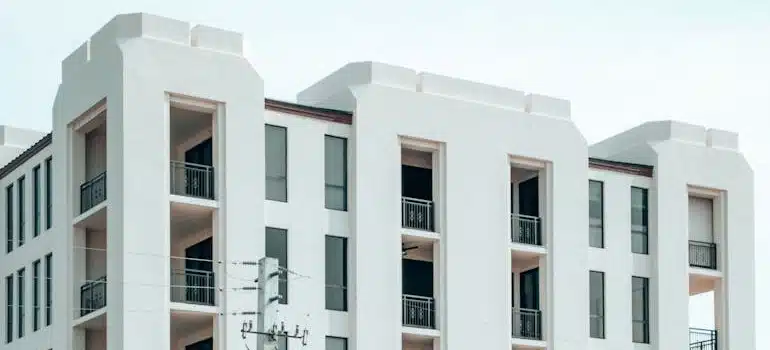Permits for home renovations in Miami
Just bought a home in Miami and ready to start fixing it up? Before you swing a hammer or hire a contractor, there’s something important you need to know: Miami takes building permits seriously. From roof repairs to new windows, many updates require approval from the city or county. Skip permits for home renovations in Miami, and you could face fines, delays, or worse. This article by Pro Movers Miami will help you avoid common mistakes, understand the rules, and get your renovation started the right way!
Why permits matter in Miami
If you’re moving to Miami and planning to renovate your new home, start by learning about local building permits. Miami-Dade County follows strict regulations. These rules help protect your safety, your property value, and your investment. A permit ensures your project meets code, which lowers the risk of faulty work and structural problems.
Renovating without a permit can cost you more in the long run. Inspectors may issue fines or even stop your project. If you try to sell your house later, unpermitted work can delay the process or reduce your home’s value. Also, insurance may not cover damage linked to illegal construction. It’s better to follow the process from the start than deal with problems later.

Common renovation projects that need permits
Many home upgrades in Miami need city or county permits. If your work includes any of the following, plan to apply:
- Building room additions or converting garages
- Replacing or installing a new roof
- Major electrical work or panel upgrades
- Plumbing changes or water heater replacements
- Moving or removing load-bearing walls
- Window or door replacements (especially for hurricane-impact units)
Even if your project seems small, it may fall under permit requirements. Always double-check with the city before starting. And if you’re still finalizing your move or need help with heavy furniture during renovations, local movers in Miami can help make the setup easier.
Projects that usually don’t need a permit
You don’t need a permit for every home improvement. If you’re painting walls, replacing flooring, or swapping out kitchen cabinets (without changing plumbing or wiring), you’re in the clear. Here are examples of tasks that don’t usually need a permit:
- Painting interior or exterior walls
- Installing carpet or tile
- Replacing appliances (if no electrical/plumbing is altered)
- Cabinet or countertop replacement (without plumbing changes)
- Installing ceiling fans or light fixtures (if wiring stays the same)
- Minor landscaping or fencing under a certain height
Still, some projects can fall into gray areas. If you’re unsure, call the Miami Building Department to confirm.
Where to apply for permits in Miami
Depending on your home’s location, you may deal with the City of Miami or Miami-Dade County. If you live in Coral Gables, Miami Beach, or another municipality, check their local requirements.
Start at the Miami-Dade County Building Department website. Most permits can be applied for online using the iBuild portal. You’ll need:
- A detailed project description
- Site plans or construction drawings
- A licensed contractor’s information (if required)
- Payment for applicable permit fees
For homes within the City of Miami limits, visit the City of Miami Building Department website. You can schedule in-person appointments if your project needs additional review.
Steps to get your renovation permit approved
Getting a permit for home renovations in Miami isn’t just about filling out a form. The city and county want to make sure your project is safe, legal, and done right the first time. If this is your first renovation here, expect some back-and-forth with officials, especially if your plans involve structural work or flood zone areas.

Starting early gives you time to gather documents, choose the right contractor, and avoid last-minute delays. Here’s how to move through the permitting process smoothly:
- Plan your renovation in detail. Work with a licensed contractor or architect if needed.
- Submit all required documentation to the city or county portal. Include drawings, materials, and contractor details.
- Pay the permit fee. Costs vary based on your project’s size and type.
- Wait for the plan review. Approval may take several days to several weeks.
- Schedule inspections during key stages of the work.
- Get final sign-off. Keep your permit and inspection documents for future use.
Don’t skip any step. A failed inspection may delay your renovation and increase costs. If an inspector finds problems, you’ll need to fix the issue before moving forward. That could mean extra materials, added labor, or redoing parts of the work.
The role of licensed contractors
Florida law requires a licensed contractor for most structural, electrical, or plumbing work. Your contractor should pull permits for home renovations in Miami on your behalf, but it’s your job to confirm they do.
Always verify a contractor’s license using the Florida Department of Business & Professional Regulation (DBPR) website. Avoid unlicensed workers. If something goes wrong, you have little legal protection.
Ask your contractor for:
- Proof of licensing and insurance
- Details about what permits they’ll obtain
- A written estimate and timeline
If your Miami-Dade contractor refuses to pull a permit or asks you to skip it, consider it a red flag. Furthermore, if you’re still in the process of settling in, working with reputable moving companies in Miami-Dade familiar with the locale can save you time and stress.
What happens if you skip permits
Skipping permits may seem faster, but it rarely works out well. Miami-Dade County inspectors can stop your renovation, fine you, or require you to remove completed work. Fines can exceed $500 per day for ongoing violations.
Even worse, unpermitted work can delay your home sale or prevent buyers from securing financing. Insurance claims may also be denied if the damage relates to illegal construction. You could end up paying twice: once for the original work and again to fix or redo it legally.
Special rules in flood zones and historic districts
Miami includes coastal areas, flood zones, and neighborhoods with historic designations. These come with extra permitting steps. If you live in a flood zone, your renovation must follow FEMA regulations. That includes elevation requirements and flood-proof materials. You may need to submit extra engineering documents.
For historic districts like parts of Little Havana or Coconut Grove, get approval from the Historic and Environmental Preservation Board. Your plans may need to preserve original materials, styles, or layouts. In Miami Beach, strict coastal regulations apply. Always ask local officials before making changes in these zones.

Permit tips for new Miami homeowners
If you recently bought a home in Miami, take a few extra steps before you relocate with local movers in Florida and start to renovate:
- Ask your seller or realtor if past work was permitted.
- Visit the city’s building records portal to check the permit history.
- Get copies of old permits, especially for roofs, HVAC, and electrical systems.
- Don’t assume your contractor pulled the permit—check for a permit number.
- Call 311 or visit the city website for help with specific project rules.
These small checks can save you from bigger issues later!
Wrapping up your renovation plans
Remodeling a home in Miami means more than choosing new tile or paint. Permits, inspections, and timelines all shape how smoothly your project goes. Start with clear plans, work with licensed professionals, and stay in close contact with the city or county. A bit of preparation up front will save you time, money, and headaches later on.
As you work to obtain permits for home renovations in Miami, don’t forget to coordinate any furniture storage or post-move unpacking. Our Miami movers assist with both short-term moves and complete home setups. Whether you’re living in the home during renovations or moving in after the work is done, we’re here to support every stage.
